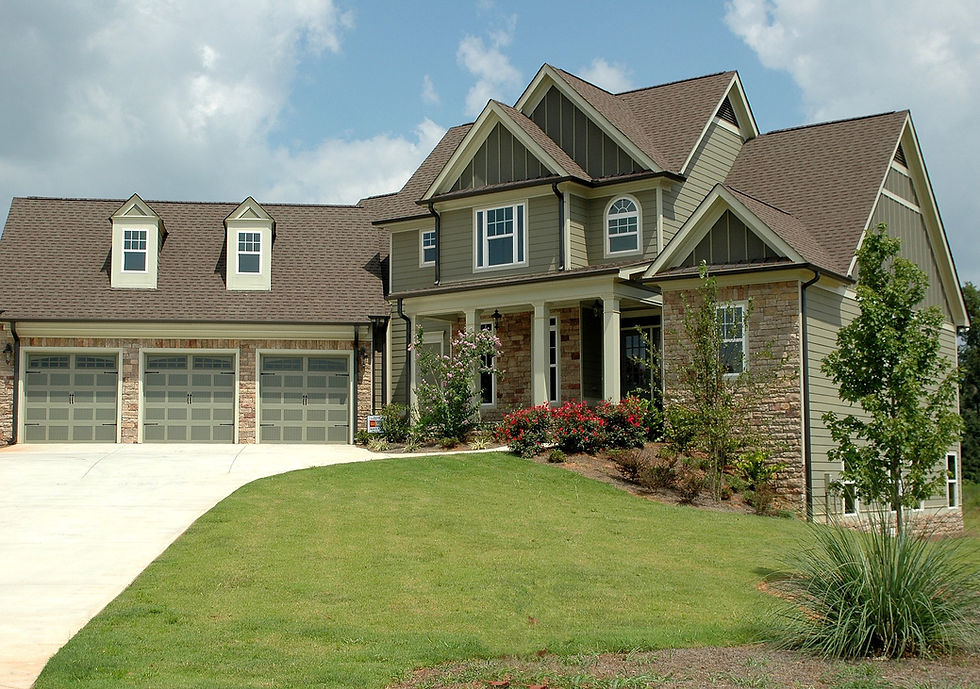Creating a Space for Meditation: Designing Your Sanctuary of Serenity
- shartnett1115
- Aug 13, 2024
- 3 min read

In today's fast-paced world, finding moments of peace and mindfulness is essential for overall well-being. One powerful way to cultivate inner calm and relaxation is by creating a dedicated space for meditation in your home. Whether you're new to meditation or looking to enhance your practice, here are practical tips and ideas for designing your own sanctuary of serenity:
1. Choose a Quiet and Tranquil Location
Select a quiet corner or room in your home where you can retreat without distractions. Ideally, this space should be away from high-traffic areas and noise. Consider rooms with natural light or views of nature, as these can enhance the sense of tranquility during meditation.
2. Clear the Clutter
Create a clutter-free environment to promote mental clarity and relaxation. Declutter the space and remove any unnecessary items that may cause distraction. Minimalist decor with clean lines and neutral colors can create a soothing atmosphere conducive to meditation.
3. Comfortable Seating
Choose comfortable seating that supports good posture during meditation. Options include a meditation cushion (zafu), yoga mat, or a comfortable chair. Ensure that the seating arrangement allows you to sit upright with your spine straight, promoting ease of breathing and relaxation.
4. Enhance with Natural Elements
Incorporate natural elements such as plants, stones, or wood accents to bring a sense of grounding and connection to nature. Indoor plants not only add greenery but also improve air quality and create a calming ambiance. Consider placing a small indoor fountain or a bowl of water to introduce soothing sounds.
5. Soft Lighting and Ambiance
Create a serene ambiance with soft, diffused lighting. Use candles, Himalayan salt lamps, or soft LED lights with dimming capabilities to adjust the lighting intensity according to your preference. Natural light during the day and soft, warm light in the evening can enhance the atmosphere of your meditation space.
6. Personalize with Meaningful Decor
Infuse your meditation space with meaningful decor that inspires peace and reflection. This could include inspirational quotes, spiritual symbols, artwork, or items that hold personal significance. Choose decor that resonates with your meditation practice and evokes positive emotions.
7. Sound and Music
Consider incorporating soothing sounds or meditation music to create a calming auditory environment. Use a portable speaker to play nature sounds, ambient music, or guided meditation recordings that help you focus and relax during meditation sessions.
8. Aromatherapy
Enhance your meditation experience with aromatherapy by using essential oils or incense. Select scents like lavender, sandalwood, or frankincense known for their calming and grounding properties. Use a diffuser or incense holder to gently infuse the air with your chosen scent.
9. Privacy and Serenity
Ensure privacy in your meditation space to create a sense of sanctuary. Use room dividers, curtains, or screens if needed to create a private area where you can meditate undisturbed. This helps maintain focus and allows you to fully immerse yourself in your practice.
10. Regular Maintenance and Refreshment
Maintain your meditation space regularly by keeping it clean, organized, and inviting. Refresh the decor, change scents, and adjust lighting as needed to keep the ambiance fresh and conducive to meditation. A well-maintained space encourages regular meditation practice and supports your overall well-being.
Creating a space for meditation in your home is a transformative journey towards inner peace and mindfulness. Whether you dedicate an entire room or a small corner, prioritize creating an environment that nurtures your practice and allows you to reconnect with yourself. By integrating these tips into your meditation space design, you can cultivate a sanctuary where serenity and tranquility thrive, enhancing your mental, emotional, and spiritual well-being.
3.5



Comments